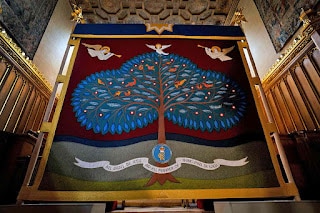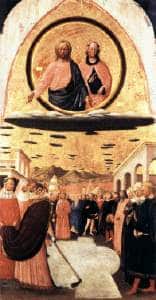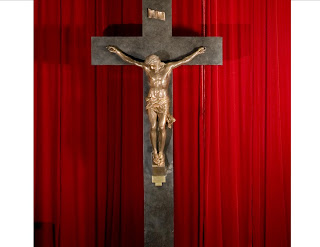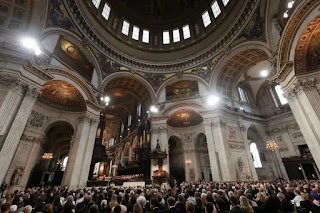Among the multiple burdens associated with old age and its attendant infirmities are the therapeutic exercises recommended for one’s back or knees or general mobility and to which, in my own case, I am sometimes faithful and sometimes unfaithful. In addition to the difficulties and discomforts that may be associated with such exercises, another associated problem is their sheer boredom. Thankfully, on one’s iphone one can access everything from All things Considered to classical and contemporary music as possible backgrounds to alleviate the inevitable tedium.
So this week, in anticipation of Saturday’s coronation of King Charles III, I am listening to Georg Friedrich Handel’s famous coronation anthems, above all most glorious of them, Zadok the Priest. Handel (1685-1759) composed Zadok the Priest for the coronation of King George II in 1727, and it has been sung at every British coronation since then.
The anthem’s proper place in the coronation service is as the monarch is being prepared for his or her anointing with holy oil. That is the most sacred part of the ceremony, the rite in which the monarch is ritually consecrated to God for the service of his or her people. The text (based on 1 Kings 1:34-35) refers to the anointing of King Solomon:
Zadok the priest and Nathan the prophet anointed Solomon king.
And all the people rejoiced and said:
God save the King! Long live the King! God save the King!
May the King live for ever. Amen. Hallelujah.
Handel’s anthem expresses the religious and historical significance of Solomon’s consecration as Israel’s king and thus analogously captures the religious, political, and cultural significance of the consecration and crowning of a Christian king.
The anointing of Christian kings in conscious imitation of Old Testament practice became a regular religious rite in the early Middle Ages. In England, it goes back at least to the ceremony devised by Saint Dunstan for the coronation of King Edgar at Bath Abbey in 973 A.D., which itself drew upon the rituals already used for the Frankish kings beginning with Pepin (the father of Charlemagne) and the rites generally used for the consecration of bishops. Since Harold II in 1066, all English monarchs have been consecrated in Westminster Abbey, the church associated with England’s one canonized King, Edward the Confessor. Prior to the union with England, the Scots originally crowned their monarchs at Scone Abbey on the so-called « Stone of Destiny » or « Stone of Scone. » (Scottish monarchs’ right to be crowned and anointed was eventually recognized by Pope John XXII in 1329.)
One especially nice novelty at the coming coronation will be the new processional cross made from Welsh silver and containing relics of the True Cross sent to the king as a coronation gift by Pope Francis. Inscribed on the Welsh Cross are words from the final sermon of Saint David (the patron saint of Wales): Byddwch lawen. Cadwch y ffydd. Gwnewch y pethau bychain, that is, “Be joyful. Keep the faith. Do the little things” – good advice not just for a king but for all of us as we struggle through life.
While virtually every coronation incorporates some novel features, it is its traditional character that dominates. That of Elizabeth II was simultaneously a very religious, standard C-of-E ceremony, celebrated (via TV) as a lavish spectacle on the world stage. The only thing remotely comparable to it in my lifetime was Pope Saint John XXIII’s coronation as pope in 1959, a glorious ritual, which the puritanical Pope John Paul I subsequently eliminated – to the Church’s and the world’s loss. The coronation of King Charles III, while suitably adapted to today’s altered circumstances, still promises to be more than sufficiently traditional in order to still express in ritual form that unique combination of sacred kingship consecrated to God and the social contract between king and citizens which has long been the ceremony’s special purpose and significance to combine and celebrate.
Photo: The newly handcrafted screen intended to conceal the king during the sacred anointing rite. It depicts a tree representing the 56 member countries of the Commonwealth. Its design was personally chosen by King Charles and is inspired by a stained-glass window in the Chapel Royal at St James’s Palace. The screen is a gift of the City of London Corporation and City Livery Companies and was produced by the Royal School of Needlework and other expert craftspeople.




